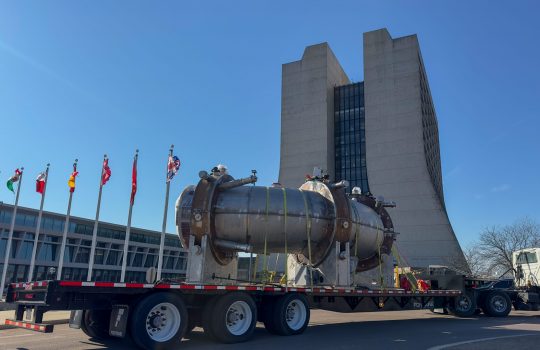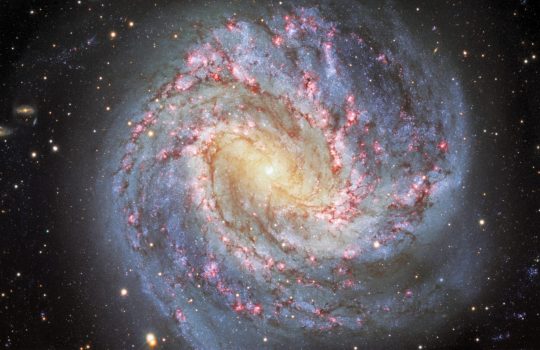BATAVIA, Illinois – Scientists of the Pierre Auger Observatory, a project to study the highest-energy cosmic rays, will hold a celebration to mark the presentation of the first physics results from the nearly-completed detector array in Malargüe, Argentina, from November 9 to November 11, 2005. Media representatives wishing to attend should make arrangements as soon as possible, and should begin by contacting Rosa Pacheco at the Pierre Auger Southern Observatory (+54 2627) 471 562, email: augercelebration@auger.org.ar. Sign-up through the Web site is also available at www.interactions.org/auger/.
The Pierre Auger Observatory, which expects to release its first scientific data this summer, is exploring the mystery of high-energy cosmic rays-charged particles showering the earth at energies above 1019 electron volts, about 10 million times higher than the world’s highest-energy particle accelerator, the Tevatron at Fermilab. There is no scientific consensus on the origin of these highest-energy cosmic rays. To witness these extremely rare events, the observatory is constructing an array of 1600 detectors spread over 3000 square kilometers in Argentina’s Mendoza Province, just east of the Andes Mountains. Each detector contains 3000 gallons of water. The detector array covers an area approximately the size of the state of Rhode Island in the United States. The Observatory collaboration includes more than 200 physicists from 59 institutions in 16 countries, and the construction cost of approximately $50 million has been shared by the participating countries.
The first physics results from the Pierre Auger Observatory are expected to show a new cosmic ray spectrum at the highest energies, the results of anisotropy and point source searches, and new limits on the photon content of the primaries that address a number of theories about exotic theories of cosmic ray origin.
The celebration will begin with an informal reception the evening of Wednesday, November 9. A symposium on Thursday, November 10, will include presentations on the origins of the project, the construction, and the first science results. Guided tours of the Observatory will be given on Friday, November 11. The events will conclude on Saturday, November 12, with a science fair featuring participants from local schools.
In November, the Southern Hemisphere is in its spring season. The city of Malargüe is a popular destination for hiking, horseback riding, whitewater rafting, and fly fishing, and is close to some of the finest wine-growing regions in Argentina. Excursions to these outdoor activities and other local places of interest will be available before and after the ceremonies. For registration, and for information on transportation, hotel accommodations and car rentals, visit www.interactions.org/auger/. For more information on the Pierre Auger Observatory, visit www.auger.org/.
Fermilab is a U.S. Department of Energy Office of Science national laboratory, operated under contract by Universities Research Association, Inc.



